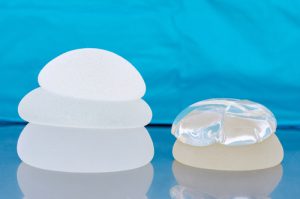Home|Blog | The Five S’s of Breast Augmentation
The Five S’s of Breast Augmentation
The American Society for Aesthetic Plastic Surgery (ASAPS) released statistics showing that in 2014 a total of 286,694 breast augmentation procedures were performed in the United States. This makes it the second most popular cosmetic procedure after liposuction.
Even with its popularity, there is still some confusion about the procedure itself, including the types of decisions that women have to make prior to undergoing the surgery. The Five S’s of breast augmentation will simplify and clarify the details of these important choices:
1) Saline vs. Silicone Implants
 The implants used for breast augmentation are either filled with saline or silicone, and the difference between the two is quite substantial. Saline implants are filled with saltwater (saline) and have the feel and consistency of water and do not simulate the nature of breast tissue. In women who are thin or have little breast tissue, one can often actually feel the edges of the implant through the skin. There can also be associated rippling of the overlying skin in many situations. Because they can be filled after they are inserted into the breast pocket, a smaller incision can be employed as compared a silicone breast implant.
The implants used for breast augmentation are either filled with saline or silicone, and the difference between the two is quite substantial. Saline implants are filled with saltwater (saline) and have the feel and consistency of water and do not simulate the nature of breast tissue. In women who are thin or have little breast tissue, one can often actually feel the edges of the implant through the skin. There can also be associated rippling of the overlying skin in many situations. Because they can be filled after they are inserted into the breast pocket, a smaller incision can be employed as compared a silicone breast implant.
Silicone implants are filled with a cohesive silicone gel that provides a feel and consistency quite close to that of breast tissue. This naturalness is a tremendous advantage over saline implants. Additionally, they will last substantially longer than saline implants – another very important factor.
In the United States, silicone breast implants account for about 80 percent of the implants used for breast augmentation in 2014. My usage is effectively 100% because I strongly feel that, for multiple reasons, they are far superior on many levels as compared to the saline implants.
2) Surgical Incision
For placement of the breast implant in the performance of a breast enlargement, there are three distinct incision locations that one can choose from, each with some advantages and disadvantages. Which one would be best for you would be discussed at the time of your consultation and would be affected by your preferences, lifestyle, and other factors.
The most common approach used is the inframammary incision, which is situated along the breast crease. This is the one that I use the vast majority of the time – and for several reasons as it does have distinct advantages over the other locations. There is also the periareolar incision, which is located along the lower half of the areola and the transaxillary incision, which is made in the armpit area.
3) Size
When people think of breast implants, it is usually size that comes to mind, which is not surprising at all! As a patient, size is crucial in facilitating the outcome that you desire. To determine the ideal implant size (range) that would be right for you, it is critically important that you know or have some idea of the look that you are seeking. This includes considerations such as proportionality, how you want to be perceived, and how much you want your implants to affect your lifestyle.
Most women want their breast augmentation to be somewhat proportionate with their body or slightly larger whereas there are others who just want to be over the top large and be perceived as such. While there’s no right or wrong answer (and this is a bit subjective), I will offer my advice based on your anatomy and desires, helping you to make the most informed decision.
4) Shape
Implants are configured in two main shapes – round and anatomic/teardrop. Despite the terminology, the results after surgery often are not necessarily distinctly different. These issues can be discussed at the time of your consultation.
In addition, both styles of implants have different classifications of configurations based on the relationship between their width, height, and projection. Depending on the implant manufacturer, these can be termed as low profile, moderate profile, high profile, and ultra-high profile. What this means is that for a given implant volume, some will provide more width and less projection (such as in the case of low-profile implants) whereas others will provide far more projection with a reduced width (high and ultra-high profile). This latter style can be quite advantageous, for example, in women whose chests are relatively narrow or for those who are wider and want to have quite substantial projection.
5) Surgeon
Selecting your surgeon is probably the most important decision that you can make for a breast augmentation. Your plastic surgeon should be certified by the American Board of Plastic Surgery (ABPS) and affiliated with medical societies such as the American Society of Plastic Surgeons (ASPS) and the American Society for Aesthetic Plastic Surgery (ASAPS). Before choosing your plastic surgeon, ask to see some of his or her work (before and after photos) or check their website, read some reviews (though this can be misleading at times), and speak to friends or family members who have undergone cosmetic surgery.
Your private consultation with the plastic surgeon will help you decide whether you feel comfortable with him or her (and his or her staff) and whether you feel he or she can deliver the best results for your breast augmentation.
As you consider breast augmentation, the Five S’s will help you make informed decisions. Dr. Steven H. Turkeltaub is a board-certified plastic surgeon and a member of the ASPS, the ASAPS, and other medical societies. Schedule your consultation with Dr. Turkeltaub today by calling (480) 451-3000 or by filling out our online contact form.
